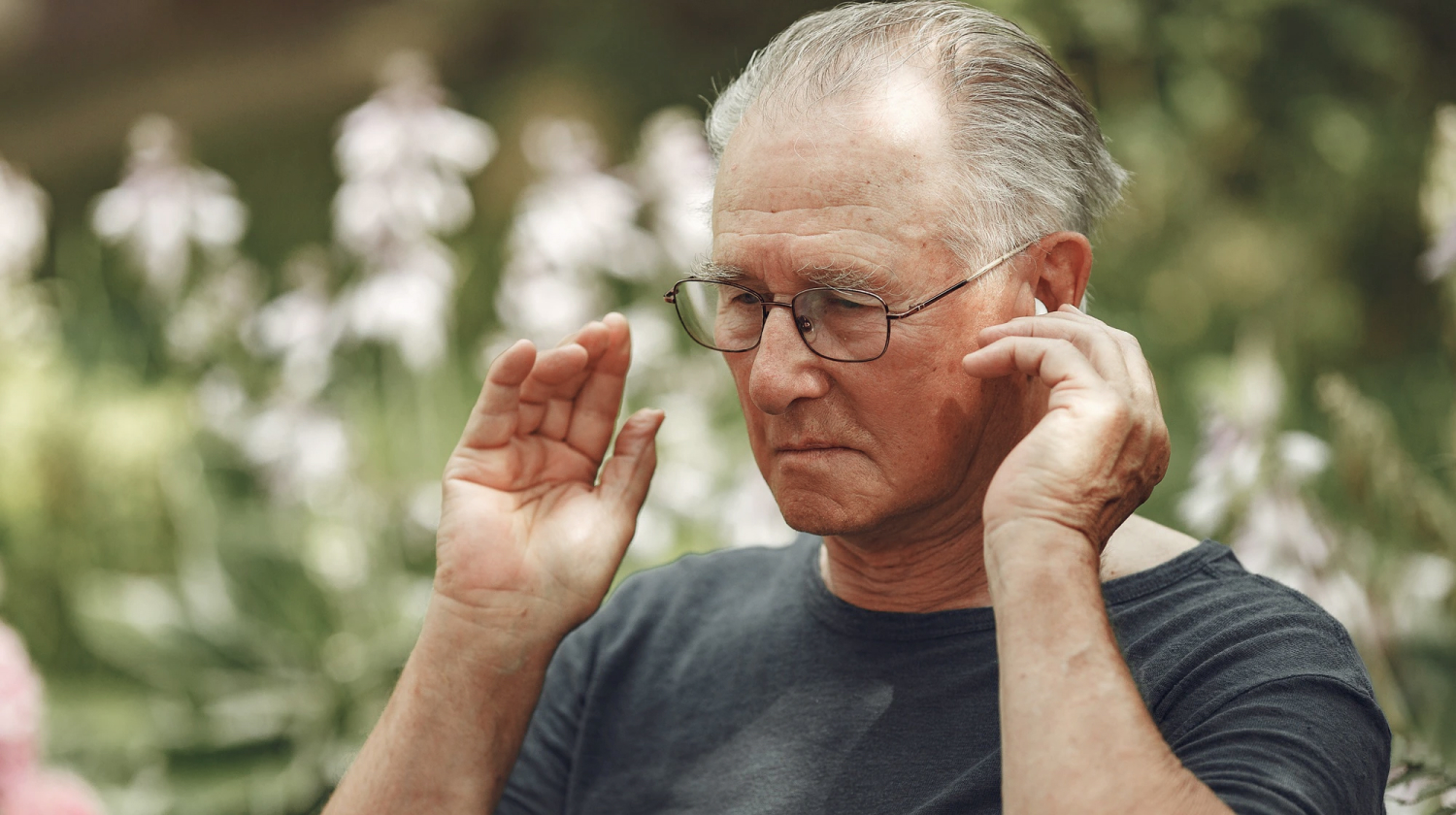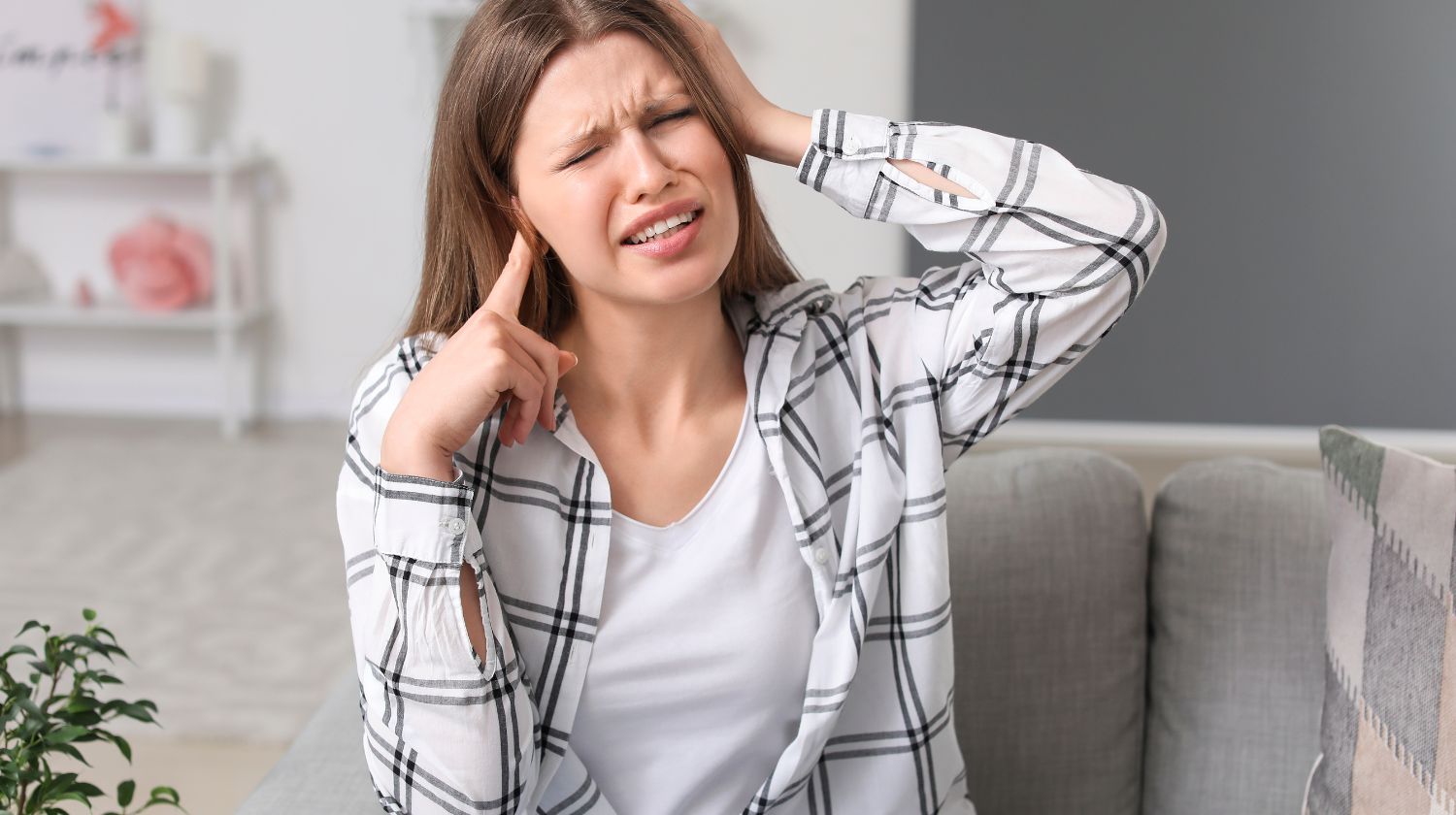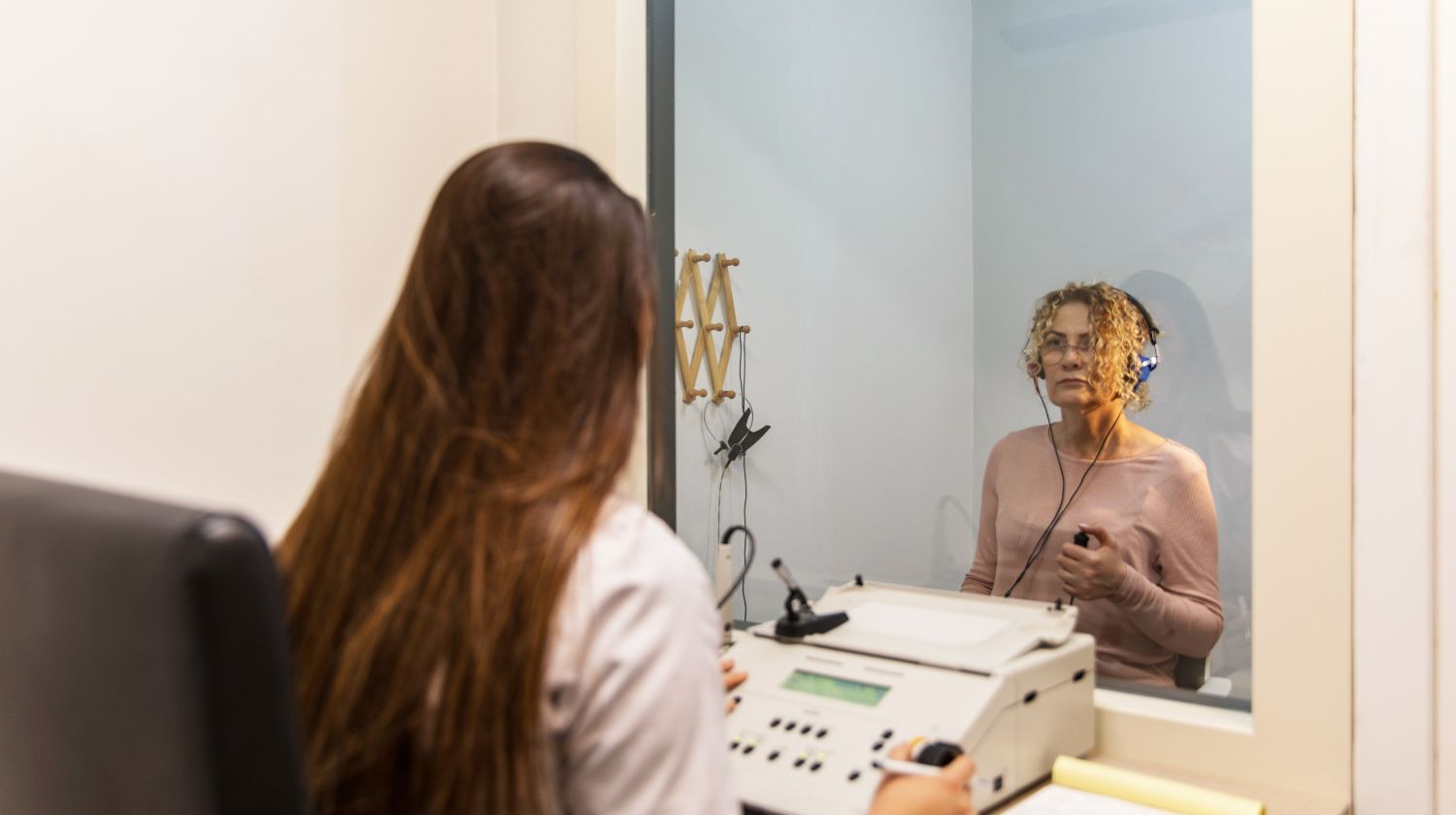 Expert's opinion
Expert's opinion
Expert's opinion
The article is a subjective view on this topic written by writers specializing in medical writing.
It may reflect on a personal journey surrounding struggles with an illness or medical condition, involve product comparisons, diet considerations, or other health-related opinions.
Although the view is entirely that of the writer, it is based on academic experiences and scientific research they have conducted; it is fact-checked by a team of degreed medical experts, and validated by sources attached to the article.
The numbers in parenthesis (1,2,3) will take you to clickable links to related scientific papers.
Pulsatile Tinnitus: Symptoms, Causes & Treatments

Have you ever heard a rhythmic thumping or whooshing sound in one or both ears? Perhaps in sync with your heartbeat? You might be experiencing a form of tinnitus known as pulsatile tinnitus.
While tinnitus is typically constant, some people experience it intermittently. Understanding this condition is the first step towards managing it effectively.
Keep reading to learn more about the nature of pulsatile tinnitus, its symptoms and causes, the diagnostic process, and various treatment options.

Causes of Pulsatile Tinnitus
The Link Between Blood Vessels and Pulsatile Tinnitus
Most commonly, pulsatile tinnitus is due to blood vessel disorders[1]. These include high blood pressure, changes in the blood vessels’ structure, or increased blood flow. Some people may even hear the sound of their blood flowing in the jugular vein, a large vein that carries blood from the brain back to the heart.
Idiopathic Intracranial Hypertension
Idiopathic Intracranial Hypertension (IIH) is a common cause of pulsatile tinnitus[2]. The condition is characterized by elevated intracranial pressure without any obvious cause. This increased pressure can lead to symptoms like pulsatile tinnitus and headaches.
Other Potential Causes of Pulsatile Tinnitus
Many factors can cause pulsatile tinnitus, including head and neck tumors, neurological diseases, certain medications, and autoimmune diseases.
Some rare disorders, like sigmoid sinus diverticulum[3], dural arteriovenous fistula, and venous sinus stenosis, can also lead to pulsatile tinnitus.
What Is Pulsatile Tinnitus?
Understanding Tinnitus
Tinnitus[4] is a condition that causes the patient to hear sound when no external sound is present. These sounds, often described as ringing, buzzing, humming, or whooshing, can be highly distracting and impact your quality of life.
Defining Pulsatile Tinnitus
Pulsatile tinnitus[5] differs from the common form of tinnitus (also known as subjective tinnitus) because it’s not just a ringing in the ears. Unlike non-pulsatile tinnitus, which tends to be a steady tone, pulsatile tinnitus usually presents as a rhythmic pulsing sound, often in time with the patient’s heartbeat. It’s common for this form of tinnitus to be caused by abnormalities in blood flow within the head and neck.
The Peculiar Case of Tinnitus
In some cases, pulsatile tinnitus can be, occurring only at certain times or under specific conditions. This makes it even more challenging to diagnose and treat, as the symptoms might not be present during a medical evaluation.
Recognizing Pulsatile Tinnitus Symptoms

Common Symptoms of Pulsatile Tinnitus
Pulsatile tinnitus presents differently than other forms of tinnitus. It’s not simply a high-pitched ringing or buzzing sound. Here are some of the distinguishing features:
- Thumping or whooshing sounds: The main symptom is a rhythmic thumping or whooshing sound, which often syncs with the patient’s heartbeat. The sound may be heard in one or both ears.
- Hearing loss: Patients may experience a degree of hearing loss, often in conjunction with the rhythmic sound.
- Dizziness: Some people with pulsatile tinnitus may also feel dizzy or unsteady, a symptom that might indicate more severe conditions.
- Fullness in the ear: Patients may report a sense of fullness or pressure in the affected ear, adding to their discomfort.
Distinctions of Symptoms
Pulsatile tinnitus is a unique condition that doesn’t follow a continuous pattern. Here’s what makes it different:
Fluctuating Symptoms
The symptoms of tinnitus may come and go. There may be periods when patients experience no symptoms, followed by episodes where symptoms are difficult to cope with.
Quiet Moments Exacerbate Symptoms
Because these sounds tend to be subtle, they often become more noticeable in quiet settings. Patients are most affected during moments such as preparing to sleep or sitting in a quiet room.
The Impact of Pulsatile Tinnitus on Quality of Life
Living with pulsatile tinnitus can have substantial effects on a person’s everyday life, including:
- Sleep issues: The rhythmic noise can interfere with falling asleep or cause interruptions in sleep, leading to insomnia or other sleep disorders.
- Concentration difficulties: Persistent sounds in the ears can disrupt focus, leading to reduced productivity and frustration.
- Emotional distress: Over time, the presence of these sounds can lead to emotional distress, including anxiety, depression, and stress.
How Is Pulsatile Tinnitus Diagnosed?
The Role of Clinical Examination
The journey to a diagnosis[6] usually starts with a comprehensive clinical examination[7]. Key steps include:
- Medical History: The patient’s medical history provides valuable clues about potential triggers or underlying conditions.
- Physical Examination: The medical team will conduct a physical exam, paying close attention to the head and neck.
- Hearing Test: A hearing test, also known as an audiogram, helps evaluate the patient’s hearing capability.
- Listening to Blood Flow: Doctors might listen to the blood flow in the patient’s neck and skull using a stethoscope. This can reveal unusual flow patterns, like a high-pressure jet of blood.
Diagnostic Tests for Pulsatile Tinnitus
Several imaging tests help visualize the blood vessels and identify any potential issues. Common tests include:
- Magnetic Resonance Imaging (MRI): This test can reveal sinus wall abnormalities, blood vessel disorders, and other irregularities.
- Magnetic Resonance Angiography (MRA): MRA[8] is often used to investigate blood vessel disorders like arteriovenous malformations or glomus tumors.
Differential Diagnosis and Ruling Out Other Conditions
Differential diagnosis plays a critical role in pinpointing the exact nature of the condition. This process[9] involves:
- Analyzing Symptom Profile: Doctors consider the nature of the sound the patient hears, which can help distinguish pulsatile tinnitus from other conditions.
- Ruling Out Other Conditions: Based on the symptom profile and test results, doctors can rule out other potential conditions, further confirming a diagnosis of pulsatile tinnitus.
Navigating Pulsatile Tinnitus Treatment

Unraveling Medical Treatments for Pulsatile Tinnitus
The path to treating pulsatile tinnitus focuses on addressing the underlying cause. Common treatments include:
- Biofeedback and Neurofeedback: These techniques teach individuals to control bodily processes that normally occur involuntarily, such as heart rate, with the aim of reducing tinnitus symptoms.
- Medications: Certain medications might be useful in treating tinnitus symptoms, although no drug is currently FDA-approved for this purpose. Some antidepressants and anxiolytics may be used off-label for this reason. Other common medications include:
- Blood Pressure Medication: Drugs that help manage high blood pressure can alleviate some forms of pulsatile tinnitus.
- Diuretics: These can reduce cerebrospinal fluid, proving beneficial for treating conditions like idiopathic intracranial hypertension.
- Tinnitus Maskers: These are devices similar to hearing aids that play a sound more pleasant than the tinnitus noise. Some newer hearing aids come with tinnitus maskers built into them.
Delving Into Surgical Approaches to Pulsatile Tinnitus
Surgery may be an option for conditions resulting from vascular abnormalities or tumors:
- Neck Surgery: Conditions like a high-riding jugular bulb may necessitate neck surgery.
- Neurological Surgery: Conditions such as a dural arteriovenous fistula might require neurological surgery for correction.
Embracing Lifestyle Adjustments and Complementary Therapies
A combination of complementary therapies and lifestyle changes can help manage symptoms:
- Cognitive Behavioral Therapy (CBT): This type of therapy can help individuals manage the emotional stress and anxiety associated with tinnitus. CBT teaches coping mechanisms to deal with negative thoughts and reactions to tinnitus.
- Sound Therapy: This therapy uses external noises, potentially through types of hearing aids, to mask the perception of tinnitus.
- Tinnitus Retraining Therapy (TRT): Through counseling and sound generators, TRT helps patients learn to “tune out” the tinnitus.
- Diet and Exercise: Lifestyle changes like maintaining a healthy diet, staying hydrated, exercising regularly, reducing alcohol and caffeine intake, and avoiding smoking can also help manage symptoms.
- Other Lifestyle Modifications: These can include reducing caffeine intake, introducing herbal supplements, or trying CBD gummies for tinnitus. Regular sleep, relaxation exercises, and mindfulness can also help manage tinnitus symptoms.
When To See a Doctor
Identifying Warning Signs
The onset of certain symptoms necessitates immediate medical attention:
- Ongoing Tinnitus: Persistent pulsatile tinnitus should be evaluated by a medical professional.
- Hearing Loss: Sudden or gradual hearing loss is a critical sign to seek help.
- Dizziness: If accompanied by tinnitus, it could signify a more serious condition.
- One-Sided Symptoms: Symptoms experienced only in one ear or accompanied by other neurological symptoms require evaluation.
The Essential Role of a Tinnitus Specialist
A tinnitus specialist can provide an in-depth evaluation and guide patients toward effective treatments. Such a specialist, often an otolaryngologist or audiologist, is trained to identify the nuanced triggers and help you develop a custom treatment plan.
Conclusion
Pulsatile tinnitus can be a burden, but understanding its causes, symptoms, and treatment options can help you manage it effectively. Whether it’s seeking medical advice, making lifestyle changes, or learning about the sensorineural hearing loss that often accompanies it, knowledge is your first step toward relief.
+ 9 sources
Health Canal avoids using tertiary references. We have strict sourcing guidelines and rely on peer-reviewed studies, academic researches from medical associations and institutions. To ensure the accuracy of articles in Health Canal, you can read more about the editorial process here
- Alexander, M.D., English, J. and Hetts, S.W. (2013). Occipital artery anastomosis to vertebral artery causing pulsatile tinnitus. [online] doi:https://doi.org/10.1136/bcr-2012-010632.
- Nih.gov. (2020). Idiopathic Intracranial Hypertension | National Eye Institute. [online] Available at: https://www.nei.nih.gov/learn-about-eye-health/eye-conditions-and-diseases/idiopathic-intracranial-hypertension.
- Abinayaa Purushothaman Ravichandran, Su, Y. and Yacoub, H.A. (2023). A Treatable Cause of Pulsatile Tinnitus: A Case of Sigmoid Sinus Dehiscence. [online] doi:https://doi.org/10.7759/cureus.35577.
- Esmaili, A. and Renton, J.D. (2018). A review of tinnitus. [online] 47(4), pp.205–208. doi:https://doi.org/10.31128/ajgp-12-17-4420.
- Hofmann, E., Behr, R., Neumann-Haefelin, T. and Schwager, K. (2013). Pulsatile Tinnitus. [online] doi:https://doi.org/10.3238/arztebl.2013.0451.
- Narsinh, K.H., Hui, F.K., Saloner, D., Adelyn Tu-Chan, Sharon, J.D., Rauschecker, A.M., Safoora, F., Shah, V., Meisel, K. and Amans, M.R. (2022). Diagnostic Approach to Pulsatile Tinnitus. [online] 148(5), pp.476–476. doi:https://doi.org/10.1001/jamaoto.2021.4470.
- Hofmann, E., Behr, R., Neumann-Haefelin, T. and Schwager, K. (2013). Pulsatile Tinnitus. [online] doi:https://doi.org/10.3238/arztebl.2013.0451.
- François, C.J. (2020). Abdominal Magnetic Resonance Angiography. [online] 28(3), pp.395–405. doi:https://doi.org/10.1016/j.mric.2020.03.005.
- Hofmann, E., Behr, R., Neumann-Haefelin, T. and Schwager, K. (2013). Pulsatile Tinnitus. [online] doi:https://doi.org/10.3238/arztebl.2013.0451.



